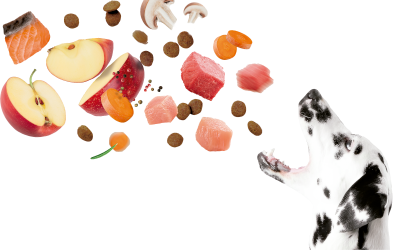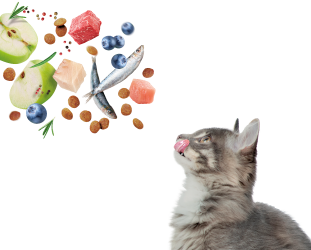Shedding season in dogs and cats: what it is, when it happens, and how to care for them.
Shedding in our pets, both dogs and cats, is a natural process that occurs primarily twice a year: in spring and fall. During these seasons, your four-legged friend prepares for the changing weather, shedding the fur it no longer needs and replacing it with a coat more suitable for the temperature.
Why does fur shedding occur?
Shedding is a completely normal process and responds to the need to adjust the thickness of the coat according to the season. In spring , pets often lose the thicker fur that helped keep them warm during the winter. Meanwhile, in autumn , they replace their light summer coat with a thicker, warmer one, preparing for the cold.
Additionally, factors such as breed, age, overall health, and diet influence the amount of hair a pet sheds. For example, some dog and cat breeds shed more heavily due to their coat type.
.png)
How to control fur shedding?
Although shedding is inevitable, there are ways to control it so that loose fur doesn't invade every corner of your home:
1. Regular brushing: During shedding season, brushing your dog or cat daily can significantly reduce the amount of hair in your home and prevent matting and matting. Deshedding brushes, such as deshedding combs, are very effective.
2. Baths: Bathing with products appropriate for your dog's coat type can help remove loose hair more efficiently. However, avoid over-washing, as this can dry out their skin.
3. Quality nutrition: A diet rich in nutrients, such as Omega 3 and Omega 6 fatty acids, promotes coat health and can minimize excessive shedding. At Dibaq Petcare, we offer foods that meet these nutritional needs. We offer specific foods for dogs and cats . We offer functional snacks specifically designed for coat care , and we also offer supplements that provide significant benefits .
.jpg)
4. Vet Checkup: If you notice your pet shedding more hair than usual, has bald spots, or has inflamed skin, consult your veterinarian, as this could be a symptom of an underlying health problem, such as allergies or hormonal problems.
When to worry? Symptoms that shedding isn't normal
Although shedding is a natural process, there are signs that something isn't right . If your pet shows any of these symptoms, it's a good idea to see a veterinarian:
- Hair loss in specific areas, forming bald spots.
- Irritated, reddened or crusty skin.
- Constant itching or excessive scratching.
- Weight loss or apathy.
These symptoms could be related to parasites, skin infections, allergies, or hormonal problems, such as hypothyroidism in dogs.
.png)
Tips for the home during the move
In addition to caring for your pet, during shedding season it's important to keep your home as clean as possible to prevent hair from accumulating on furniture and floors:
1. Vacuum frequently: Use a powerful vacuum, preferably one designed to pick up pet hair. A handheld vacuum can also be useful for cleaning specific areas like sofas or beds.
2. Furniture covers: Place washable covers on the furniture where your pet often rests. This makes cleaning easier and protects your sofas and chairs.
.png)
3. Lint Rollers: Keep lint rollers on hand to quickly and efficiently remove excess fur from clothing and furniture.
4. Humidifier: Using a humidifier can reduce dryness in the environment, which helps prevent hair from becoming so dispersed in the air.
.png)
Shedding can seem like a challenge, but with proper care, this process can be managed without major problems. Keep your pet healthy with a balanced diet, brush them regularly, and make sure to keep their environment clean. With these simple tips, both your furry companion and your home will be in perfect condition during this time.
Share this content















